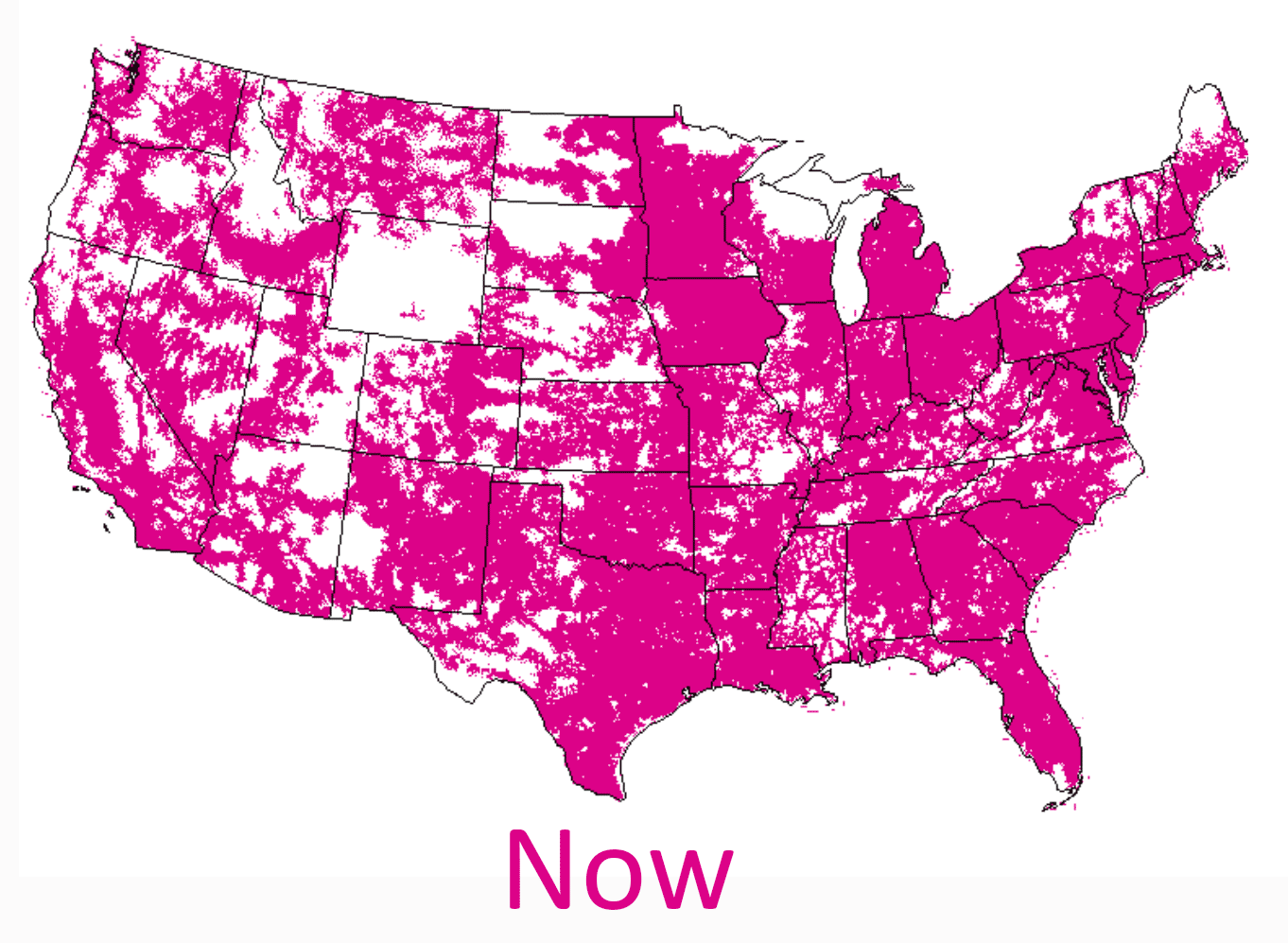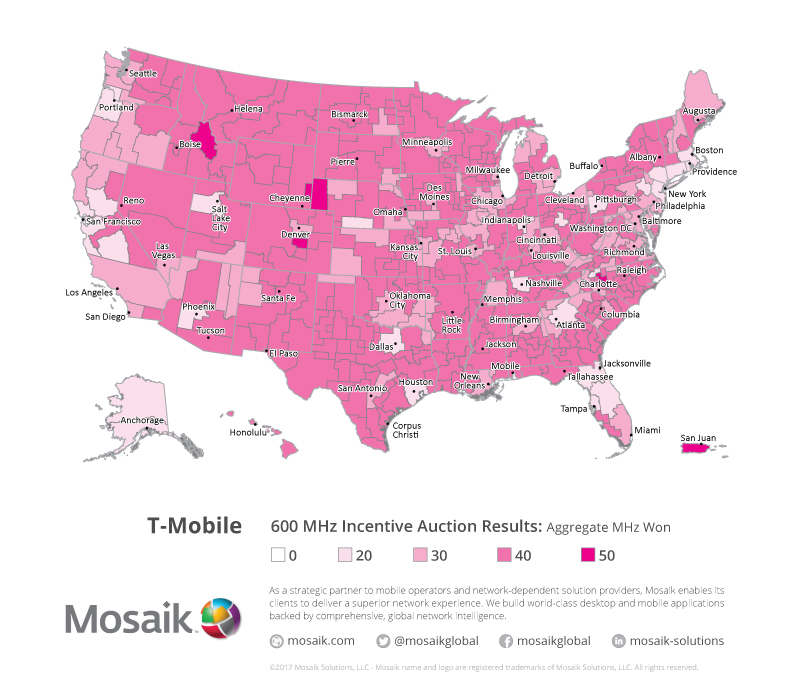T-Mobile Just Took A Huge Step Towards Beating Verizon Once And For All
This April, T-Mobile spent $8 billion on new low-band spectrum to improve its wireless network. As of right now, that network is online. A "cluster site" in Cheyenne, Wyoming, is the first place in the country to be lit up with T-Mobile's 600MHz LTE network.
Neville Ray, T-Mobile's Chief Technology Officer, described the rollout as a "massive milestone" for T-Mobile, and one that should "materially close" T-Mobile's existing coverage gap with Verizon "by the end of the year."
To call it a "massive milestone" is really an understatement. Normally, rolling out new spectrum takes years. Verizon, for example, bought 700MHz spectrum from the FCC in a similar auction in 2008, and didn't turn the network on until 2010. Ray said that "the FCC only granted the licenses in June, so to have the network online by August...is much faster than anyone expected."
600MHz spectrum is going to be a big deal for T-Mobile as it should finally fix the network's coverage problems. Cell networks operate across dozens of different "bands," and broadly speaking, the lower the frequency, the better the coverage. Lower-frequency radio waves travel further and penetrate objects better, which in the real world means superior coverage in rural areas and inside buildings — everywhere that Verizon's network, thanks to a wealth of low-band spectrum, currently excels.

The site in Wyoming that's live today is the first of many that should go live by the end of the year. The map above (from a FCC filing) shows where T-Mobile is planning on building out coverage to in 2017, and that includes 600MHz sites in Wyoming, Northwest Oregon, West Texas, Southwest Kansas, the Oklahoma panhandle, Western North Dakota, Maine, Coastal North Carolina, Central Pennsylvania, Central Virginia and Eastern Washington.
Rolling out 600MHz is particularly challenging because in most cases, there are TV stations using the spectrum right now. Those stations are moving to different frequencies, and T-Mobile is paying out of its own pocket to accelerate the process.
Unfortunately, all that doesn't mean that T-Mobile's customers are going to have fantastic service overnight. 600MHz isn't a frequency that's been used for LTE anywhere in the world before, so no current devices support it. Ray confirmed that "Samsung and LG will have phones in stores by the end of the year" that support 600MHz, and also said that "as T-Mobile gets more partners and devices, there will be a tidal wave of [600MHz compatible devices] in 2018." He also stressed that T-Mobile is putting" as much, if not more effort into devices than the network," but "the network has to come first."
In other words: it's an exciting time to be a T-Mobile customer.
 Everywhere that T-Mobile's 600MHz network will reach within a few years
Everywhere that T-Mobile's 600MHz network will reach within a few years
600MHz isn't the only place that T-Mobile is working to improve its network, either. Right now, T-Mobile is deploying thousands of small cell sites across the US, all of which are compatible with License Assisted Access (LAA), a technology that uses Wi-Fi spectrum to achieve crazy-fast speeds. That will help with network congestion in places like airports and shopping malls, where thousands of devices can be trying to download a Snapchat at once.
Ray also mentioned one piece of news to BGR that bodes well for the future: all the 600MHz radios that T-Mobile is deploying right now should be compatible with the 5G standard when it's finalized next year. T-Mobile has already committed to having a nationwide 5G network by the end of the decade, and this is is going to be a big part of it. When the 5G standards are finalized, T-Mobile shouldn't have to change anything on the cell towers to convert its 600MHz LTE network to 5G.
The bottom line is simple. Right now — depending on which benchmark you look at — T-Mobile is equal or better than Verizon and AT&T on download speed, but a little behind in coverage. The record-speed 600Mhz deployment will close that coverage gap, and then some. At the same time, T-Mobile is building out much of the infrastructure that will power 5G in the coming years, all while also deploying advanced LTE tech that can deliver gigabit speeds right now. Verizon and AT&T are officially on notice.